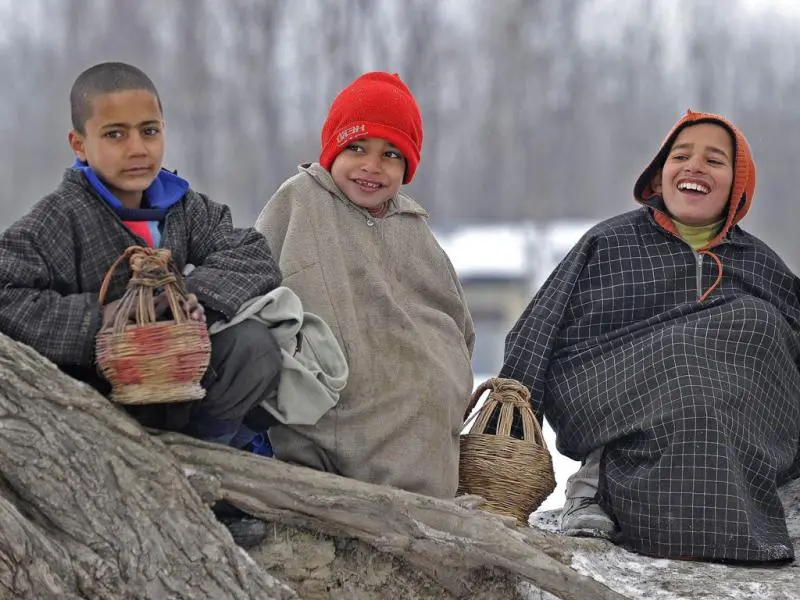Warmth Woven in Wool: The Story of Pheran and Kangri
More than just winter essentials, the pheran and kangri are symbols of Kashmiri resilience — a fusion of warmth, identity, and quiet endurance through the coldest of days.

Warmth Woven in Wool: The Story of Pheran and Kangri
In Kashmir, winter isn’t just a season — it’s a ceremony.
The snow arrives like silence, coating rooftops, orchards, and bridges. Life slows down, tea boils longer, and from every home rises the familiar fragrance of coal and kahwa. At the heart of it all are two timeless companions — the pheran and the kangri. To a Kashmiri, these aren’t just things to wear or hold. They are an inheritance of warmth, passed through generations like folklore.
The pheran, that loose woolen robe worn by both men and women, is the valley’s most iconic garment. Traditionally made of rafal (fine wool) or tweed, it drapes below the knees, trapping air and heat like a soft cocoon. It’s roomy enough to hide a kangri underneath — a portable fireplace carried close to the body. But beyond warmth, the pheran carries pride. Once a humble necessity, it has now become a cultural statement and a fashion revival. Designers have reimagined it with intricate tilla embroidery, velvet textures, and tailored fits. In recent years, Kashmiri youth wear pherans to weddings, cafés, and even offices — proof that tradition can be timeless and trendy. From runway shows in Srinagar to Instagram posts in the snow, the pheran is reclaiming its place as Kashmir’s fashion icon.
The kangri — a small earthen pot encased in wicker — is the soul of Kashmiri winter. Inside its clay belly burns coal, glowing embers that radiate steady heat. It’s carried under the pheran, like a secret heart of fire. But few know how much effort goes into creating that coal. Throughout the year, villagers prepare for winter by collecting and stacking firewood — usually from willow, poplar, or apple trees. The wood is slow-burned in earthen pits, deprived of oxygen, to produce charcoal — the soul of every kangri. These charcoal mounds, smoking quietly through summer, are the valley’s silent preparation for survival. When the chill of December finally sets in, potters craft the clay pots and weavers wrap them in wicker, sometimes painting patterns or adding colored threads. Each kangri, though humble, carries the handprint of its maker — a small masterpiece of warmth.
Ask any Kashmiri, and they’ll have a kangri story — often involving laughter, panic, or both. Everyone remembers that one winter evening when someone’s kangri slipped from under the pheran, scattering glowing embers across the carpet. In a moment of chaos, the family rushes to stomp it out — the mat burns, hearts race, and someone shouts, “Ye kamis haz peii kangir!” (Whose kangri fell?!) It’s both tragedy and comedy — part of every winter household’s ritual. Some even joke that a real Kashmiri learns balance only after surviving three kangri burns — one on the rug, one on the pheran, and one on themselves.
While the kangri remains a symbol of tradition, many Kashmiri homes now rely on hamaams — stone-floored heating rooms where firewood burns beneath marble slabs, keeping the space warm for hours. The hamaam has become the new winter gathering spot, where families sip noon chai, share stories, and warm their toes as snow drifts outside. Yet, even with hamaams and electric heaters, the ritual of holding a kangri close — its warmth breathing through the pheran — remains unmatched.
The pheran and kangri aren’t just about surviving winter; they’re about belonging to the valley’s rhythm. They speak of a culture that found art in adaptation — warmth in simplicity, beauty in endurance. Every ember, every thread of wool, carries the story of a people who learned to thrive in silence and snow.
“In Kashmir, warmth isn’t made — it’s remembered. Sometimes in wool, sometimes in fire, and always, in the heart.”